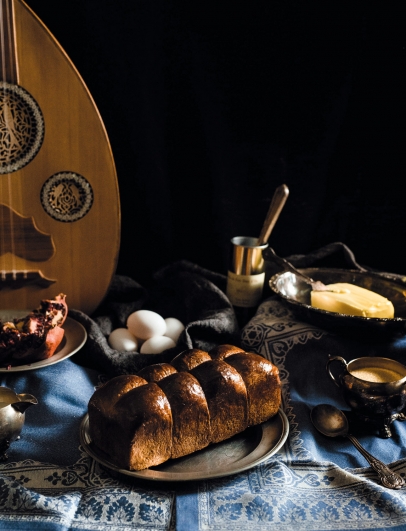Adoration of the Brioche
Bread is like opera. And good brioche the greatest of arias. Tracing the flour-dusted history of brioche is not unlike the spiraled history of western music.
It began simply: pain benit, a plain, crusty offering for the church, monophonic and chanting, a single, hangry voice crying out in a throbbing chapel.
And it grew. Eggs were brought in by the basket. The duo of flour and water becomes an enriched trio and polyphony made its way across the continent. Bass, baritone, and soprano sang out sanguine and the people were happy. Later, the people wanted more and chefs and composers were enlisted by the courts and church to improve their previous work, now a poor man’s snack.
Inimitable butter enters tangy, sweet, and yellow, giving texture and richness. Instruments are added - horn pipes are lengthened, reeds are trimmed and shorn, wood and metal mix. The orchestra is born and the bread is good.
(If butter is added to the dough while cold, it produces a delicate honeycomb texture that pulls away in gossamer strands as you break the bread. And if a baker, to make it easier on themselves, melts the butter first, the loaf will become greasy, a cake-like thing with no structure. Better to cover it in chocolate and toss it up to bad internet food bloggers or the folly of a peasant’s ignorant cows. There is an order to the operation and this is the ceremony of making bread.)
A little good milk is poured if the dough is too hard.
They topped it with a dizzy Caravaggio filigree of sugar to brown the top and warm the heart. A waving conductor, Stokowski in tails, atop a podium planted but shooting, silhouetted in sugar, into the air with arms swung broad.
The Easter lily is gilded, twice over!
That small offering of peaceful bread for monks became so enrobed with butter and egg and sugar that it had the pedigree of high king and queen pastry, but really it's still bread, only now the impossible carb diva that we love to love.
It's all so Baroque.
Any bread with butter content in excess of 20% can be called brioche. This is what we buy at the nice grocery store, but the home baker can do so much better. The recipe below comes in at 50% butter and produces a rich dough with uses innumerable - morning buns, dinner rolls, cinnamon rolls, schmear it with your favorite foie gras, roll it out and wrap it around a cheese or meat, or both, or, as outlined here, roll it into adorable little balls, rise it in a tin, and create a Lenten table masterpiece for adoration and munching.





